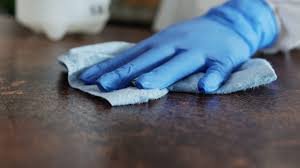SOP for Cleaning of Clean Area (Sterile Area)

Standard Operating Procedure (SOP)
Here is a complete Standard Operating Procedure (SOP) for the Cleaning of Clean Area (Sterile Area) in pharmaceutical manufacturing, ensuring compliance with GMP and sterile environmental control requirements.
1.0 Objective
To define the procedure for cleaning and sanitization of sterile areas to maintain aseptic conditions and minimize contamination risks.
2.0 Scope
This SOP applies to Grade A, B, and C areas (ISO 5, 6, 7) in the sterile manufacturing department of [Company Name], including cleanrooms, change rooms, laminar airflows (LAFs), pass boxes, and equipment surfaces.
3.0 Responsibility
| Role | Responsibility |
|---|---|
| Housekeeping Staff | Execute cleaning as per schedule |
| Production Operator | Perform equipment and immediate area cleaning |
| QA | Monitor and verify compliance |
| Engineering | Ensure HVAC system supports cleanliness |
4.0 Definitions
-
Sterile Area: Controlled environment designed to prevent microbial contamination.
-
Grade A/B/C Areas: Cleanroom classifications based on particle count and microbial limits.
-
Disinfectant: A validated agent used to destroy microorganisms.
-
Residue Removal: The process of removing disinfectant residues after application.
5.0 Materials Required
-
Validated disinfectants (e.g., 70% IPA, Bacillocid, Spor-Klenz)
-
Sterile water for injection (SWFI) or sterile purified water
-
Sterile mops and mop handles
-
Non-shedding, lint-free wipes
-
Fogger (if applicable)
-
PPE: sterile gloves, gown, goggles, face mask
-
Cleaning and sanitization checklist
6.0 Cleaning Procedure
6.1 General Guidelines
-
Perform cleaning under Laminar Air Flow (LAF) where applicable.
-
Always follow unidirectional cleaning: top to bottom, inward to outward.
-
Rotate disinfectants weekly/monthly to prevent microbial resistance.
-
Use freshly prepared or ready-to-use disinfectants as per validation.
6.2 Frequency of Cleaning
| Area | Frequency |
|---|---|
| Grade A | Before each batch, every 4 hours, and end of shift |
| Grade B | Start and end of shift, every 8 hours |
| Grade C | Twice daily |
| Change Rooms | Once per shift |
| Equipment Surfaces | Before and after use |
6.3 Step-by-Step Cleaning
A. Floor Cleaning
-
Mop with sterile water first, followed by disinfectant (e.g., 70% IPA).
-
Change mop heads after each room or area.
-
Record in the floor cleaning log.
B. Wall and Ceiling Cleaning
-
Wipe using a lint-free cloth soaked in disinfectant.
-
Start from top and move down in vertical strokes.
-
Clean corners, joints, and behind equipment regularly.
C. LAFs, RABS, Pass Boxes
-
Clean all internal surfaces with 70% IPA or designated disinfectant.
-
Wipe in one direction, avoid circular movements.
-
Clean before each batch and between shifts.
D. Equipment Surfaces
-
Wipe with sterile 70% IPA before and after each batch.
-
Ensure residue-free drying.
E. Fogging (if applicable)
-
Use approved fogging agent (e.g., Bacillocid Rasant) weekly or as per SOP.
-
Record fogging in logbook with fogger ID, agent, and concentration.
7.0 Disinfectant Rotation Schedule
-
Week 1: 70% IPA
-
Week 2: Bacillocid
-
Week 3: Spor-Klenz or equivalent sporicidal agent
-
Follow validated rotation plan.
8.0 Documentation
-
Cleaning Logbook
-
Disinfectant Preparation Record
-
Residue Removal Record
-
Area Status Labels (“Cleaned”, “To Be Cleaned”, etc.)
9.0 Safety and Precautions
-
Always wear sterile PPE.
-
Never re-use mops or wipes across different grades.
-
Use only validated disinfectants.
-
Avoid aerosol generation while cleaning.
-
Report any deviation or spillage to QA.
10.0 Abbreviations
-
SOP: Standard Operating Procedure
-
IPA: Isopropyl Alcohol
-
LAF: Laminar Air Flow
-
PPE: Personal Protective Equipment
-
QA: Quality Assurance
11.0 Annexures
-
Annexure 1: Daily Cleaning Checklist
-
Annexure 2: Disinfectant Rotation Log
-
Annexure 3: Fogging Record Template
🎓 Discover one of the best Pharmaceutical Production courses available — click below to explore the course that’s shaping future Production skills.

